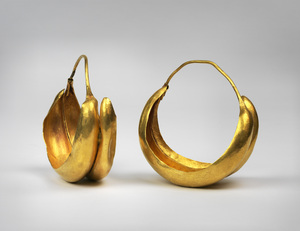Near East & Babylonian Sections Collection Highlights
What's On View
Browse all objects from the Near East Section that are currently on view.
Browse ObjectsThe Museum has a long history of fieldwork in the Middle East, beginning with the late 19th century excavations at Nippur, early Mesopotamia's pre- eminent religious center, in modern-day Iraq. The Nippur excavations were the first American archaeological project in that part of the world. Since that time, the Museum has worked in nearly every country in the Middle East, with research including not only archaeological surveys and excavations, but also ethnographic studies. The Babylonian Section houses a collection of nearly 30,000 clay tablets inscribed in Sumerian and Akkadian cuneiform, making it one of the ten largest collections in the world. The vast majority of the texts derive from the Museum's excavations at Nippur, with smaller excavated groups of tablets from Ur, Billa, Malyan, and Fara. The Section contains the largest number of Sumerian school tablets and literary compositions of any of the world's museums and its curators/scholars focus largely on the study of the language, history, and literature of the ancient Near East. The Near East collections include nearly 90,000 artifacts housed in three main geographic areas - Mesopotamia, Syro-Palestine, and Iran-with another sub-section focused primarily on materials from the Islamic world.


